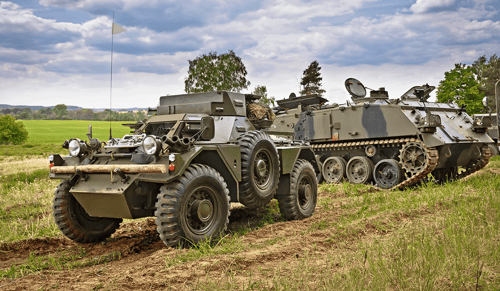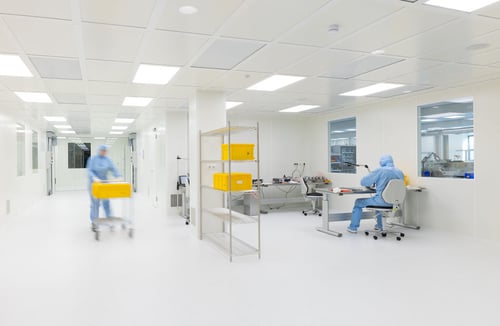Ultra wideband guarantees extremely accurate positioning
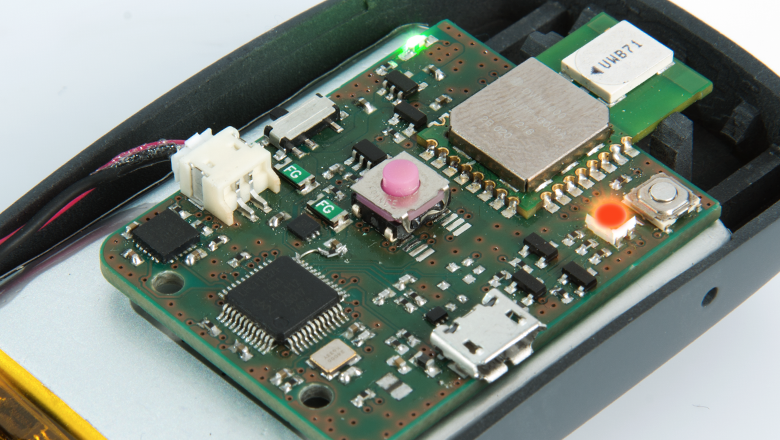
Ultra wideband (UWB) is making a comeback as a communication protocol. The Eindhoven-based start-up Vention, together with partner Sentech, has developed a UWB positioning system. The extremely accurate Focus system combines wireless technology with a sensor that measures relative positioning. The technology has all sorts of potential application, such as in retail, livestock farming and in airports.
Read about how Vention and Sentech are breathing new life into ultra wideband. Discover new potential applications with the highly accurate tracking solution.
Ambitious young guns do what they enjoy
Vention is all about product innovation. The Eindhoven-based start-up was established three years ago by TU students Frank Poort and Hans de Penning. The development of an extremely economical car for the Shell Eco marathon during their studies gave them a taste for more.
Today, with 18 ambitious young guns, almost all of whom are straight out of university, Vention is a breeding ground for innovation and prototyping. The young company focuses on electronics and embedded software in IoT applications, sensors and small wireless solutions. One such innovation to come out of Vention is a wearable that measures the muscle strength of patients who have recently suffered a stroke.
According to director Job Nijenhuis, Vention came about because of the fun the students have making innovative products. “We still only do things that we enjoy,” he says. “We’d rather build a product together with a client than tick off a list of requirements. We offer our clients a one-stop shop. This means that we can also supply a housing or an app, as long as it is in service of the electronics that we develop.”
Ultra wideband needed for new application
As well as product innovations for clients, Vention and Sentech are also developing their own product: Focus. After two years of development and testing, the advanced positioning technology is almost ready to go to market.
The technology is based on the idea of centrally controlling LED lights in wristbands worn by festival visitors, so that they create an enormous display of pixels on the festival grounds.
This requires the ability to locate the position of each wristband extremely accurately. With a maximum accuracy of 10 metres, GPS is insufficient. In addition, Vention wanted to know the position of each individual tag at any given moment.
This meant that the wristbands needed to transmit their positions several times per second.
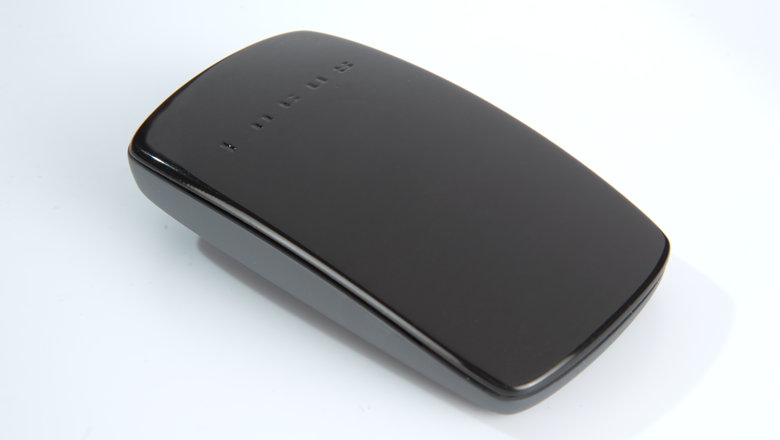
Innovation partners complement each other
According to Nijenhuis, a market survey revealed that ultra wideband was the only realistic wireless connection option. Before Sentech became involved in the innovation project, Vention worked on the development of Focus using a UWB chip from Decawave.
Both technology companies already knew each other. Sentech employs Vention on a project-by-project basis for the construction of sensor electronics and the writing of embedded software.
During the further development of Focus, the French UWB chip supplier Blinksight brought the Eindhoven-based company back together with Sentech. The innovation partners are now working together on the optimisation of Focus.
What is ultra wideband?
Ultra wideband is an existing wireless connection technology, also known as UWB or ultraband. The radio technology uses very little energy for fast communication over short distances, using a large part of the radio spectrum. Due to the wide frequency bandwidth, packages of data can be transmitted in parallel.
The so-called spread-scrum technology uses very short data pulses (of only a nanosecond) instead of a continuous data flow.
The radio technology, which was originally called pulse radio, has been around for 15 years. Interest in UWB started to decline around 10 years ago, due to a slow standardisation process and high implementation costs.
Marco Leeggangers, business development manager at Sentech, agrees that things have been quiet for some time around ultra wideband. “The UWB chips are still being developed and improved,” he says. “You can now see UWB popping up in more and more places.”
Because the market is still small, UWB chips are relatively expensive: between 20 and 25 euros. Once demand increases, the price will drop drastically, Leeggangers predicts.
“I expect its popularity to grow quickly. The technology is particularly promising for in-home connection possibilities and for sensors that measure distances and positions. It’s a small step from there to autonomous driving and to agricultural and livestock farming applications.”
Combined chip technology guarantees extreme accuracy
Ultra wideband alone does not provide the accuracy required by Vention to track tags or other moving objects. “That’s why Vention has combined the UWB chip with an inertial measurement unit, an IMU,” Nijenhuis explains.
“This enables us to track the relative positioning. Together with the absolute positioning via UWB, we can achieve accuracies of within 5-10 centimetres.”
The time-of-flight principle
Vention’s Focus system consists of a series of fixed points (anchors). These are used to determine the position of all moving tags. “Complex mathematics are used to determine and combine the relative and absolute positions,” Nijenhuis explains.
Timing and the synchronisation of data traffic are essential to the application. Determining the location of the tags is based on time of flight; the time needed for the radio signal to travel between transmission from the chip to reception by all of the anchors.
“If the timing is out by just a nanosecond, it throws off the positioning by up to 30 centimetres,” says Nijenhuis.
“We require an accuracy of roughly an eighth of a nanosecond. The synchronisation works by sending three messages for each measurement; two from the tag and one from the anchors. We fill in the gaps with information from the IMU.”
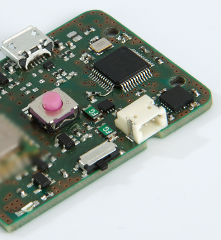
Filtering interference signals with smart software
For reliable positioning, undesired interference signals and reflections must be filtered out. For this reason, the IMU is equipped with smart software. This includes information on what movements are physically possible. After all, there are limitations to the movements people can make and their speed.
“Data that imply that a person is moving too fast can easily be filtered out,” explains Nijenhuis. “Because the tag transmits its position a hundred times per second, you can estimate from the previous measurements where the next signal will come from.”
Unique positioning system by combining knowledge
Nijenhuis considers the Focus positioning system to be unique. “I have not yet seen any other solution that can compete with us in terms of accuracy, speed and ease of installation.” Sentech and Vention have optimised the system by means of pilot projects.
One of these projects is the Blue Jay drone from the Eindhoven student team of the same name. The research team is working on a smart indoor drone that assists medical professionals in their work, but also helps patients and those in need of care with all sorts of things. The Focus system supports the drone’s autonomous movement functions.
The advanced positioning system is almost ready to go to market. The pilot projects have shown that Focus has a broader scope of application than the original idea for festival wristbands.
Unprecedented application possibilities for positioning with UWB
“We have a product with which you can accurately and quickly determine positions, track assets or manage AGVs,” Leeggangers summarises.
“That’s interesting for a wide range of applications, such as agriculture, for example. You can use the technology to control AGVs in a livestock pen or a greenhouse, simply by setting up a couple of anchors. The speed of the system really comes into its own in this type of situation.”
“The system is also able to deal with changing circumstances and can easily be expanded on a plug-and-play basis,” Leeggangers continues. “If a milking robot is installed, for example, and one of the anchors is no longer visible, you can simply reposition it. Press ‘set up’ and it’s good to go. You can also easily increase the range by installing a few extra anchors. As long as they are within sight of the other anchors.”
Ultra wideband technology provides distance measurement in the Social Distancing Sensor (SDS). This is a tool that helps people keep their distance from each other.
He is also in discussions with companies that analyse animal behaviour and with parties that wish to monitor their production processes. “Then you are into the field of the Industrial Internet of Things (IIoT), where we are currently also making giant strides.”
Leeggangers also sees possibilities in the retail sector, for example in serving and monitoring customers in a more targeted way. The technology could also be used to direct passengers at large airports.
How UWB helps with social distancing
With so many possibilities in applications, this is a perfect example. Did you know that ultra wideband helps in the one-and-a-half meter society? This technology is the base of the Social Distancing Sensor.
Such a tool measures distances compared to other SDS tags. As soon as you enter within one and a half meters of a person, the SDS will send out a warning signal.
This is how ultra wideband makes it easier to keep a distance between people.



